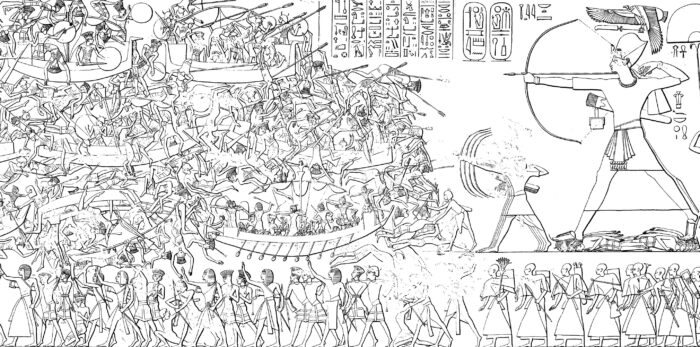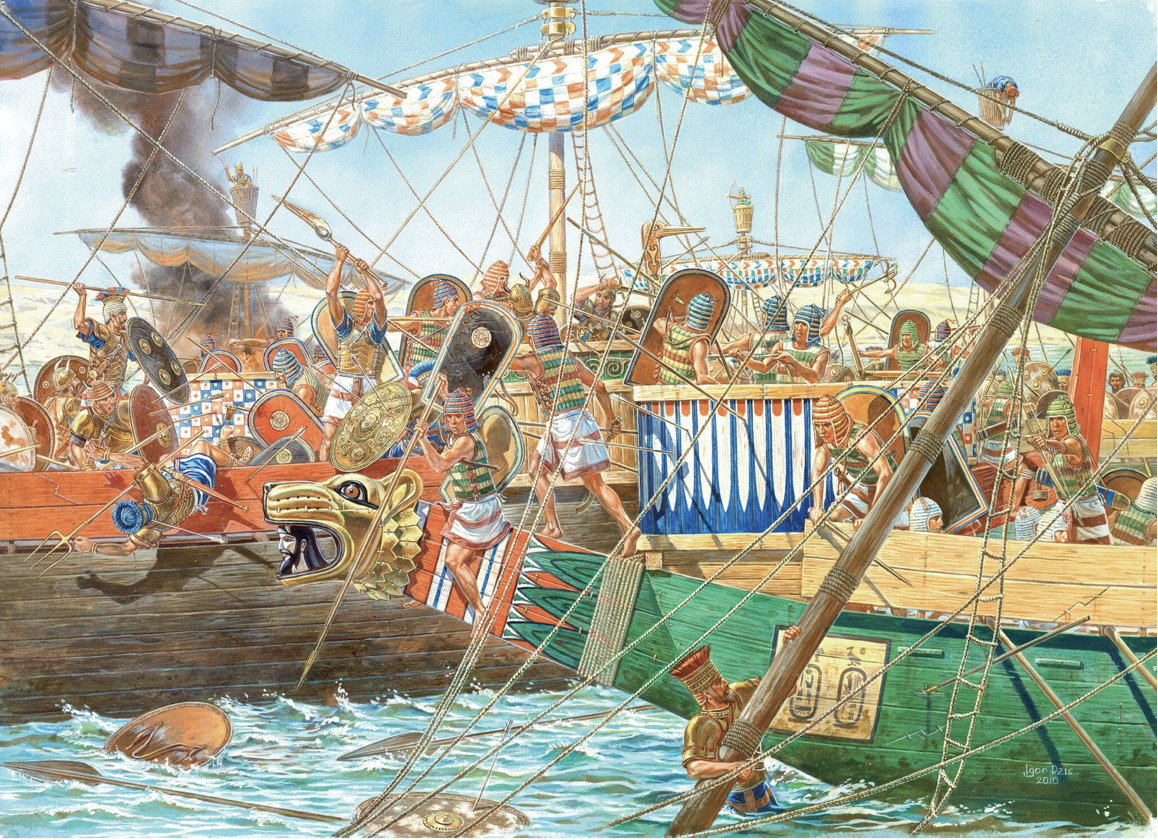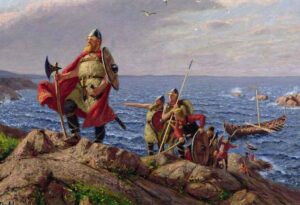Black-flagged ships sailed up the Nile, bringing mysterious seafarers who wrought havoc wherever they went. They pillaged, plundered, and burned cities to the ground during the Late Bronze Age Collapse. Who were these so-called Sea Peoples, and were they responsible for social collapse in the Mediterranean?
The Bronze Age and its collapse
The Bronze Age lasted from 3300 BC to 1200 BC. This precarious period between the Stone Age and the Iron Age featured great civilizations in the Mediterranean and the Middle East, including the Assyrians, Hittites, Mycenaeans, Minoans, Canaanites, and Egyptians.
People had shifted from a nomadic existence and started to settle permanently. Groups expanded their territories, and hereditary monarchies replaced communal/clan living from the Stone Age. Class differentiation became commonplace, and societies began to use slaves.
When humans figured out how to create bronze by smelting tin and mixing it with copper, it changed society. It made agriculture easier, opened up new trade opportunities, altered warfare, and became a symbol of wealth and power. The era also saw the development of writing, such as cuneiform, Egyptian, a proto-Caananite script, and Chinese.
However, archaeological evidence shows that several civilizations from this era then suffered a mysterious and sudden decline. Most written records ceased with the destruction of these civilizations, particularly in the eastern Mediterranean. Cultures disappeared, or other powers assimilated them. Historical evidence points to various possible causes: earthquakes, disease, drought, mass migrations, war, and a mysterious force from the sea.
Who were they?
No one knows for sure, but there are a few theories. French Egyptologist Olivier Charles Emmanuel used the phrase “peuples de la mer” (peoples of the sea) after he read about maritime invaders in the Great Karnak Inscription near Luxor.
Based on ancient Egyptian temple inscriptions and steles, the Sea People consisted of nine groups: the Lukka, Sherden, Shekelesh, Peleset, Denyen, Teresh, Tjekker, Weshesh, and Eqwesh. Historians have been unable to verify the origins of these unfamiliar groups. They’ve settled for some educated guesses based on the linguistic similarities of place names.
For example, they speculate the Lukka came from the Lycia region, the Sherden from Sardinia, and the Shekelesh from Sicily. The Peleset could be the biblical Philistines. Some ancient Jewish texts and the Bible also mention “peoples of the sea.”
Sources say the various groups wore very different clothing and armor from each other. As they weren’t a single army, historians speculate that nations hired them as mercenaries or that the Sea Peoples had several objectives.
An inscription from the reign of Ramesses III paints the Sea Peoples as bloodthirsty, anarchical, and evil: “The foreign countries made a conspiracy in their islands. All at once the lands were removed and scattered in the fray. No land could stand before their arms.”
Physical evidence
In 1928, locals stumbled upon an ancient tomb in northern Syria. French archaeologist Claude Schaeffer investigated and excavated Ugarit, a Bronze Age city of great wealth.

The Medinet Habu relief shows a battle between the Egyptians and the Sea Peoples.
A tablet unearthed from the site revealed a letter between the King of Ugarit and the King of Cyprus. They both wrote with urgency about an impending invasion of the Sea Peoples. The King of Ugarit begged the King of Cyprus for help. The Sea Peoples plundered the countryside, leaving a trail of destruction. He was surrounded, and judging by the archaeological digs, it did not end well.
Further excavations revealed signs of this destruction, including ash, crumbled building material, arrowheads, and buried treasure in Ugarit.
Theories
After the Bronze Age Collapse, the ancient world descended into a dark age. With no surviving written records, further evidence of the Sea Peoples vanished too. We do not know where else they conquered, if they settled, or whether they assimilated into other cultures.
Historians believe the Sea Peoples could have been mixed ethnic groups who banded together after their own cities declined because of environmental or political problems. The decline of the Mycenaeans in Greece, the Minoans in Crete, and the Hittites and Philistines may have prompted people to explore the seas in search of a new home. In this scenario, the Sea Peoples were migrants. If so, perhaps they fought out of necessity rather than to conquer.
Established in 2014 to “unpack cultures from 2000 BC…and uncover the mysteries of the Collapse,” a Swiss group called Luwian Studies concluded that the Luwians, from Anatolia and parts of the Hittite Empire, were the Sea Peoples.
Other academics have argued that the Sea Peoples may have originated from Central Europe or the Black Sea, but limited evidence supports this.
Villains or victims?
The Egyptian reliefs show not only warriors and battle scenes but also women and children, supporting the theory that the invaders were at least partly migrants.
As societies broke down, survivors from collapsed civilizations in the Aegean may have banded together to form a loose confederation. They then moved along the eastern Mediterranean, looking for somewhere to rebuild. Perhaps Egypt, one of the last strongholds of the age, looked like the most inviting spot.
Modern historians have regarded the Sea Peoples sympathetically, citing desperation as their primary driver. The Bronze Age Collapse was hard for everyone. Perhaps the Sea Peoples were a victim of the time rather than the cause of the collapse.

The temple of Medinet Habu features records of the Sea Peoples. Photo: Shutterstock
Legacy
New theories regularly pop up to explain the cause of the Bronze Age Collapse. Recent publications have pushed the Sea Peoples aside, focusing instead on environmental factors (earthquakes and volcanic eruptions), disease, famine, and political crises. However, the collapse was probably the result of all these factors.






